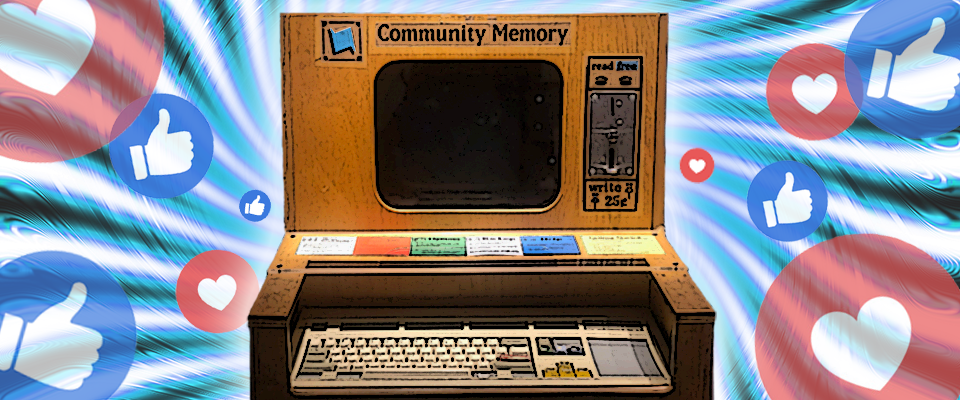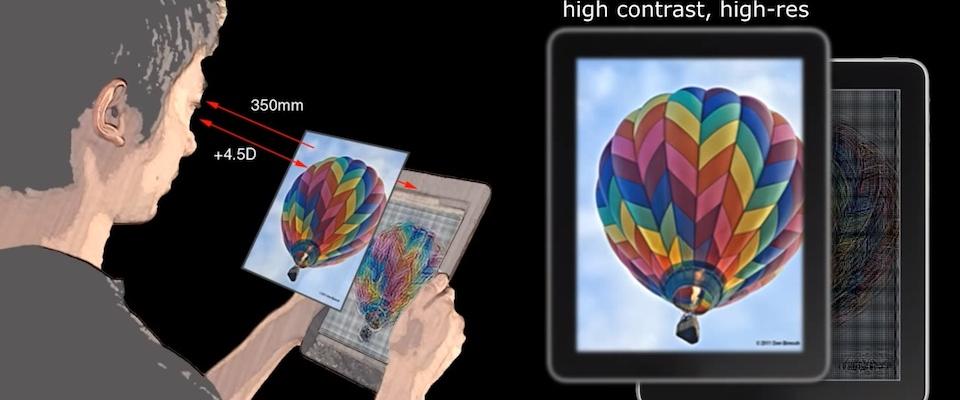On August 8th, 1973, a small group of hackers and activists calling themselves the Community Memory Project, placed an unusual device just outside the entrance to student-owned cooperative Leopold’s Records.
Inside a cardboard box with two arm-sized holes was an electronic teletype machine—basically a remote-controlled typewriter. Beside the terminal sat a young man who called out to passersby, “Would you like to try our electronic bulletin board? We’re using a computer.”

In the early 70s most people had never seen a computer, much less laid hands on one. It was the height of the Vietnam War, and computers at the time were massive, room-filling devices conjuring unsavory thoughts of The Man.
“Computers were seen as something used by the government and corporations behind closed doors,” says computer historian Marc Weber. “Not in the interest of people.” Computers had helped send men to the moon, soldiers to Vietnam, and corporate profits soaring—but what could they do for the people?
“I can’t say that we could see the future from where we stood. But we could see paths to the future and we could help build those paths. I think we had a larger effect than we can prove we did have.”
The counterculture hackers of the Community Memory Project believed they knew the answer: They envisioned a future in which computers could connect every day folk, and empower them to change the world. And it would all start in Berkeley.

When a brave soul stepped up to try the alien device, they were prompted to enter a search term on the keypad—“sitar player” for example—and then hit “enter.” The machine would spring to life.
“It would go chung-chung-chung-chung-chung,” says Lee Felsenstein, UC Berkeley grad and one of the founders of Community Memory, describing the sound the machine made as it spat out sheet of paper. On the sheet would be printed any posts containing the search term—Google results decades before Google.
“It was sort of a noisy, sluggish craigslist,” Felsenstein says. He tells the story of the Community Memory project on the Telegraph Tour app, a free walking tour launched by the Telegraph Business Improvement District last year (full disclosure: I conducted interviews for that project, including an interview with Felsenstein).
And being a sort of primitive social media platform, it also inspired the usual range of online behavior. “Community Memory was the first point where spam showed up,” says Felsenstein, “the first point for trolling, the first place where people developed personas online.” But people put the device to positive use too. “There were people who had put jokes in, who would stimulate very quirky dialogues between strangers. And there were some running gags,” Felsenstein says. “There was even a poet who used it as a marketing device.”

Felsenstein and his colleagues hoped that Community Memory would spread around the country and perhaps the world, creating a communication network that could be used to foster positive causes. The team installed terminals in several other locations, but the project fizzled within a year. There were two more iterations of the Community Memory project with higher quality terminals. Despite attracting a small but enthusiastic community of users, they also ultimately failed—in large part because of the explosion of personal computers.
Had things turned out differently, would we all be logging into our Community Memory accounts to share our thoughts and feelings, post pictures of our pets, and spark the revolution?
“I can’t say that we could see the future from where we stood,” says Felsenstein, who would later design the first-ever portable computer, the Osborne-1. “But we could see paths to the future and we could help build those paths. I think we had a larger effect than we can prove we did have.”
The project has not been entirely forgotten. An original Community Memory terminal is on display at the Computer History Museum in Mountain View.




















